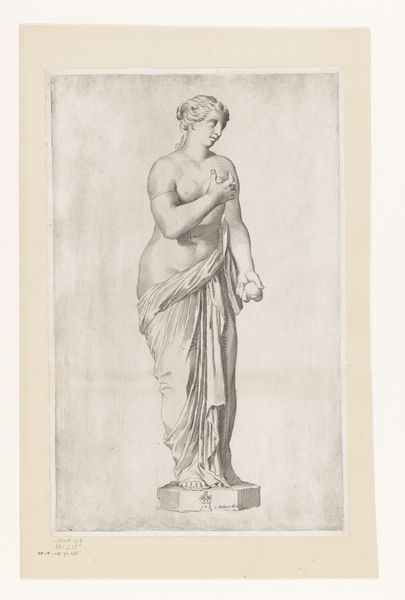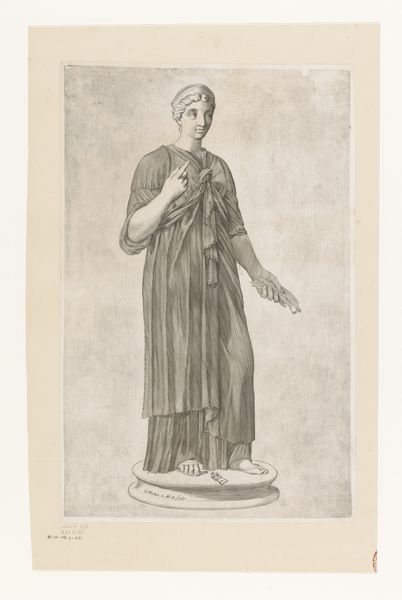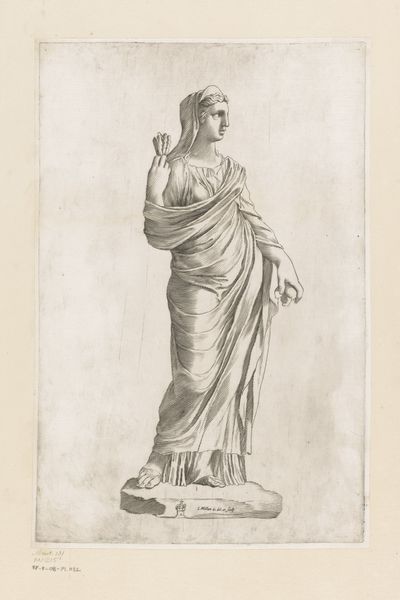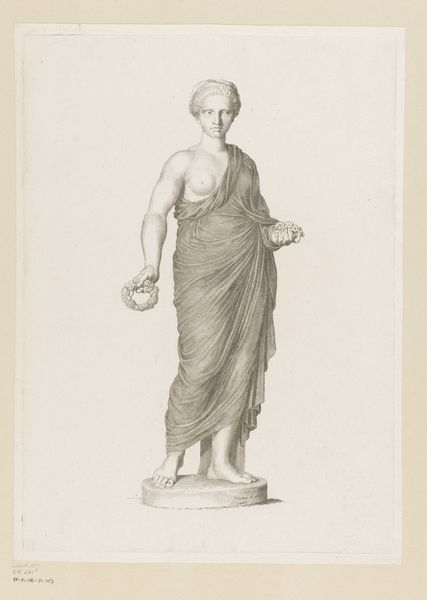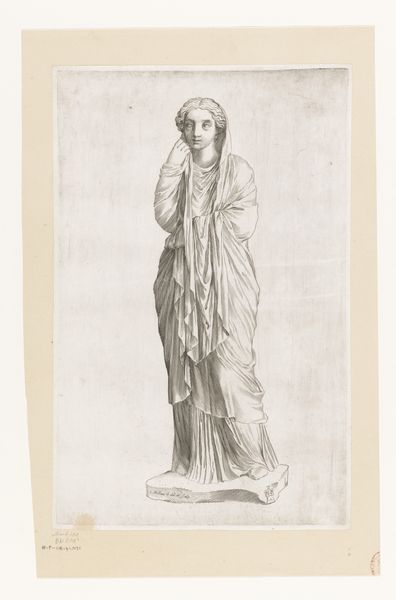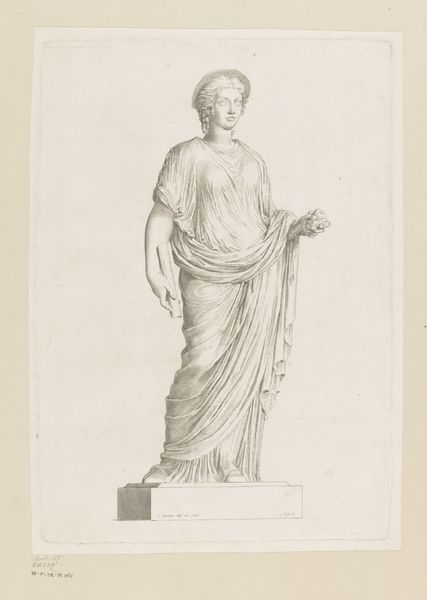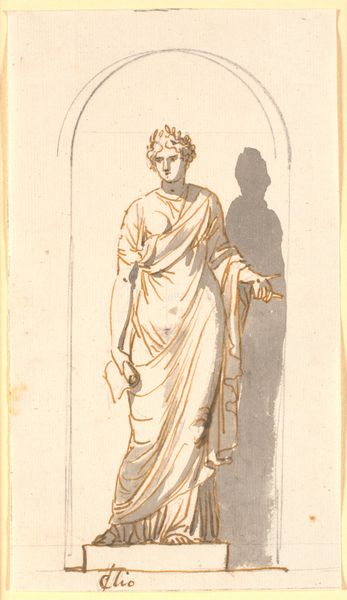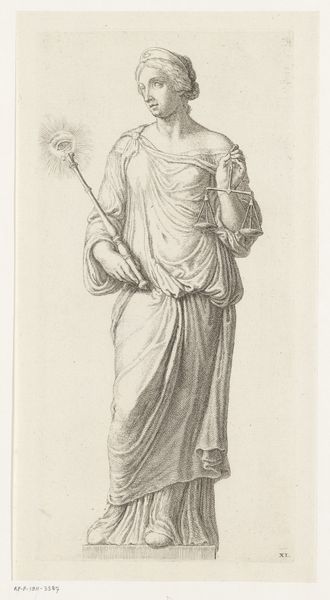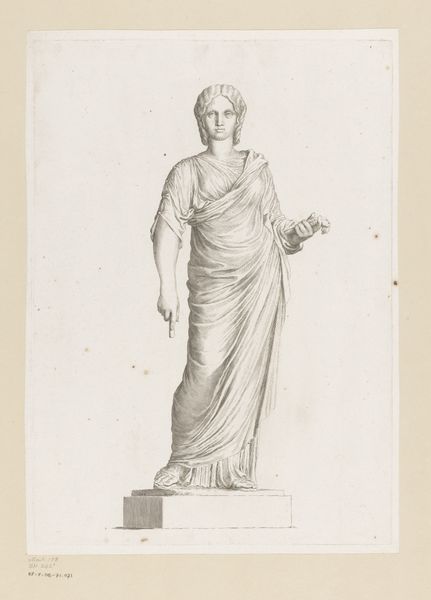
engraving
#
portrait
#
baroque
#
classical-realism
#
figuration
#
history-painting
#
engraving
Dimensions: height 375 mm, width 234 mm
Copyright: Rijks Museum: Open Domain
Editor: We're looking at "Statue of a Woman" by Claude Mellan, made between 1631 and 1637. It's an engraving. It looks so smooth and delicate! What can you tell us about this image? Curator: Notice how the image itself reproduces a sculpture. Consider Mellan's labour. He's not carving marble, but instead using the precise tools of an engraver to evoke its texture and form. Where does 'high art' truly lie – in the sculptural creation, or Mellan's reproductive skill and toil? Editor: That's a different way to look at it! I guess I assumed it was just a copy, but you're highlighting the actual work involved in the print itself. Curator: Exactly. And what kind of labour? Is it solely artistic or does it connect to artisanal labour through material engagement and skilled use of tools. Think also about the dissemination. The original statue may have been viewable only to a select elite. Yet, through prints, its image could circulate more widely within society and become accessible through commerce. Editor: That’s really fascinating. So, is the value less in the “artistic genius” and more in the skillful work and wider accessibility? Curator: Precisely. Consider what it meant to make images reproducible and shareable at this moment. Editor: This has made me think about art not just as an image, but about labor, tools, and even networks. It really expands what art can be. Curator: And who gets to participate in its creation and consumption.
Comments
No comments
Be the first to comment and join the conversation on the ultimate creative platform.
